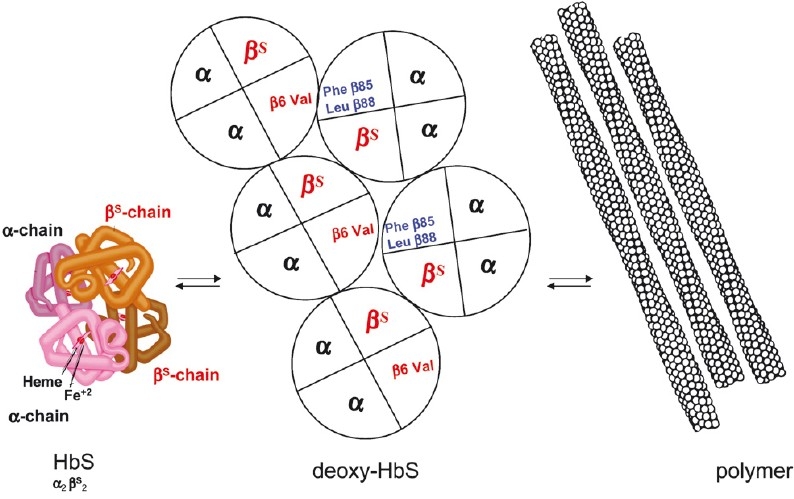Fig. 1.

Basic pathophysiological mechanism of sickle cell disease: the polymerization of deoxy-HbS. The replacement of a glutamic acid by a valine residue at position 6 in the β-globin polypeptide chain characterizes the abnormal haemoglobin of SCD: HbS. At low oxygen pressure, deoxy-HbS polymerises and gets organised in long polymer fibres that deform, stiffen, and weaken the red blood cell (not shown). This process represents the basic mechanisms leading to haemolytic anaemia and to vaso-occlusive events in the microcirculation. [Source: Modified from Labie and Elion32].
